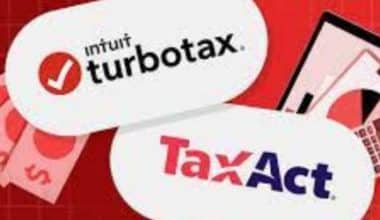Getting a tax return transcript is a crucial step in many financial endeavors, from applying for a mortgage to resolving tax-related inquiries. Tax return transcripts are important documents that provide a summary of your filed tax return information. Whether you need them for financial planning, loan applications, or resolving tax-related matters, knowing how to obtain a tax return transcript is essential. This article got you covered, whether you’re looking to get a tax return transcript online, request it through the IRS transcript by phone service, or gain an insight into the IRS refund and various transcript types.
How to Get Tax Return Transcript
There are a few options available to people for getting a tax return transcript. One choice is to use the Get Transcript function on the IRS website to submit your request. Taxpayers can instantly view and print their tax return transcript using this tool. You must register for an online account and supply personal information to this service in order to utilize it. You can read and download your tax return transcript in PDF format after it has been verified.
Filling out Form 4506-T, the Request for Transcript of Tax Return form is an additional choice. You can choose the sort of transcript you desire and fill out this form by downloading it from the IRS website. The completed form can then be faxed to the specified fax number or mailed to the correct IRS address. The IRS will handle your request as soon as it is received, and the tax return transcript will be sent to the address you specified on the form.
It’s crucial to guarantee the correctness of the information provided, whether you opt to submit Form 4506-T or obtain the tax return transcript online. The processing of your request may be delayed by any mistakes or inconsistencies. For example, when applying for a mortgage, confirming income for loan applications, or addressing tax-related concerns, getting a tax return transcript might be helpful. It’s a useful document that gives a summary of the data on your tax return that was submitted to the IRS.
How to Get Tax Return Transcripts Online
You can utilize the Get Transcript function on the IRS website to access your tax return transcript online. To prove your identification, you must register for an online account and submit personal data. You can read and download your tax return transcript in PDF format for immediate use after it has been verified.
IRS Transcript by Phone
People can easily request their tax return transcript using the IRS Transcript by Phone service without using the Internet or filling out any forms. Taxpayers can contact the specified phone number the IRS has supplied to use this service. In order to verify their identification, they will be led through an automated process that asks them to submit details about themselves, such as their Social Security number, birth date, and filing status. In order to guarantee a seamless authentication procedure, it is crucial to provide accurate and current information.
The taxpayer can ask for the precise kind of tax return transcript they require, such as the tax return transcript for the current year or the three years prior after their identity has been confirmed. The IRS address on file will receive a letter containing the requested transcript. To receive the transcript as soon as possible, it’s crucial to make sure the mailing address is correct. The IRS Transcript by Phone service makes tax return transcripts easy and fast without waiting for mail or online resources. It’s especially useful for folks who prefer phone-based solutions or don’t have internet access.
It’s crucial to remember that the IRS Transcript by Phone service is an automated system. Its speakes with a human professional is not an option. To ensure a successful transcript request, it is essential to attentively follow the prompts and submit precise information during the conversation.
IRS Refund
An IRS refund is the reimbursement of excess tax payments made by a taxpayer. When an individual pays more in taxes throughout the year than their actual tax liability, they are eligible to receive a refund from the IRS. The refund amount is determined by factors such as income, deductions, credits, and withholding. After filing a tax return, the IRS reviews the information provided and calculates the taxpayer’s actual tax liability. If it is determined that the individual has overpaid their taxes, the IRS processes the refund and issues a payment to the taxpayer.
Direct deposit, paper check, or credit on next year’s tax liability are all ways to get the refund. To get a refund quickly, file the tax return correctly and supply all the relevant information. Additionally, taxpayers can track the status of their refund using the IRS’s online tool or by contacting the IRS directly. An IRS refund can relieve financial strain and compensate excess taxes paid during the year.
Transcript Types
To meet varied needs and give individuals comprehensive information about their tax returns and financial history, the IRS provides a variety of transcripts. There are three primary categories of transcripts:
#1. Tax Return Transcript
This transcript gives an overview of the data included in a tax return. It contains information on the filing status, reported income, tax due, and deductions and credits. Transcripts of tax returns are frequently requested when applying for a mortgage, a student loan, and other financial products.
#2. Tax Account Transcript
This transcript gives a thorough description of all transactions made by the taxpayer, including any changes made to the tax return after it was filed. It contains details about things like tax refunds, fines assessed, and adjustments made by the IRS. Transcripts of tax accounts are helpful in confirming previous tax payments and settling any inconsistencies.
#3. Wage and Income Transcript
This transcript serves as a record of the revenue that employers, financial institutions, and other payers have reported to the IRS. It contains information about salaries, dividends, interest income, and other kinds of revenue. When people need to confirm their income for loan applications, financial planning, or resolving other income-related concerns, wage and income transcripts are useful.
Taxpayers can study their tax records, verify facts, and resolve tax filing concerns using various transcript kinds. The IRS provides them online, by mail, or by phone.
How Can I Get My Tax Transcript Online Immediately?
You can utilize the IRS’s online “Get Transcript” service to get your tax transcript right away. Using this service, you can access your tax transcripts directly on the IRS website and examine, download, and print them. You must set up an account and supply some personal data for verification in order to utilize this service.
After your identity has been confirmed, you can immediately access and download your tax transcripts in PDF format. Online tax transcripts are convenient and fast. Remember that not all transcript kinds can be available online immediately. The Get Transcript online service is reliable and fast for most people to get tax transcripts.
How Can I Get My Tax Return Transcript?
To obtain your tax return transcript, you have several options available. One way is to request it online through the IRS website. You can use the “Get Transcript” tool to view and download your tax return transcript directly. Another option is to request it by mail using Form 4506-T, which you can download from the IRS website. Simply fill out the form and mail it to the address provided. Additionally, you can contact the IRS by phone and request your tax return transcript. Be prepared to provide your personal information and answer some security questions to verify your identity. Once your request is processed, the IRS will send you the tax return transcript either electronically or by mail, depending on your chosen method.
What Is the Difference Between a Tax Return and a Tax Transcript?
The key difference between a tax return and a tax transcript lies in their purpose and content. A tax return is a document you file with the IRS to report your income, deductions, and credits for a specific tax year. It includes detailed information about your financial activities and is used to determine the amount of tax you owe or the refund you’re entitled to receive. On the other hand, a tax transcript is a summary or overview of the information on your filed tax return. It provides a condensed version of your tax return data, including items like your adjusted gross income, tax liability, and any payments made. It doesn’t include all the supporting schedules and attachments that were part of your original tax return.
Unlike a tax return, a tax transcript records your tax information. Tax transcripts are needed for loan applications, tax concerns, and education financial help. They provide a snapshot of the data reported on your tax return without including detailed supporting documents. In summary, the tax return is the complete report you submit, while the tax transcript is a concise summary of the key information from your filed return.
When Can I Get My Tax Return Transcript?
You can typically request your tax return transcript from the IRS after they have processed your tax return. The availability of the transcript depends on the filing method you used. If you filed your tax return electronically, you can request the transcript within a few weeks of e-filing. For paper-filed returns, it may take longer, usually around six to eight weeks, before the transcript becomes available. The IRS processes tax returns in the order they receive them, so the timing may vary.
To request your tax return transcript, you can use various methods provided by the IRS. These include online requests, phone requests, or mailing a completed Form 4506-T. The online option is usually the quickest, allowing you to access and print your transcript immediately. Phone requests can also provide instant access to your transcript if you pass the identity verification process. Mailed requests, however, may take several weeks to process and receive the transcript by mail.
Overall, the timing of obtaining your tax return transcript depends on factors such as the filing method, IRS processing times, and the method you choose to request the transcript. It is best to check the IRS website or contact their helpline for specific information and guidance regarding your transcript request.
Why Would Someone Need a Tax Return Transcript?
A tax return transcript may be necessary for a number of reasons. It can first be used to confirm income when applying for a loan or mortgage. Lenders often request tax return transcripts to assess a borrower’s financial stability and repayment capacity. Financial aid applications, including those for student loans and grants, frequently require tax return transcripts. Educational institutions use them to determine a student’s eligibility for financial aid.
Transcripts of tax returns can also be helpful in resolving tax-related problems. A tax return transcript can help give accurate and extensive information about your tax return if you’re being audited or need to settle a tax dispute with the IRS. It acts as a trustworthy record of your declared income, claimed deductions, and other pertinent tax data.
In conclusion, tax return transcripts are important records that help with tax resolution, and financial assistance applications, and serve as evidence of income. Lenders, educational institutions, and tax authorities frequently ask for them to confirm financial information, and they give a thorough analysis of your tax return.
What Does a Tax Return Transcript Show?
A tax return displays key information from your tax return, such as your stated income, deductions, and credits. It includes information about your filing status, the types of forms and schedules you utilized, and any income adjustments you made. The transcript also shows if you claimed any tax credits or received a refund.
Furthermore, the tax return details any penalties, interest, or other changes made by the IRS. It displays the sums owed or refunded to you, as well as any payments or credits applied to your tax liability. Details regarding any changes made to your tax return, such as corrections or amendments, may also be included in the transcript.
A tax return transcript, in general, provides a thorough overview of your submitted tax return, allowing you to review and verify the information recorded on your original return. It is a valuable document for a variety of purposes, including loan applications, financial aid, and tax difficulties.
Is a Tax Transcript the Same as a W2?
No, a tax transcript and a W-2 form are not interchangeable. Despite the fact that both documents deal with taxes, they have different objectives. A tax transcript is a summary of the data on your tax return, including your earnings, tax credits, and deductions. It comes straight from the IRS. A W-2 form, on the other hand, is sent to you by your employer and lists your wages, tax deductions, and other pertinent details related to your work. It is often required for accurately filing your tax return and is utilized to record your income to the IRS. Therefore, even though they both have to do with taxes, a tax transcript gives you a general picture of your financial situation, whereas a W-2 form is primarily about your income from employment.
Why Is My Tax Transcript Not Available?
There could be a number of causes for the non-availability of your tax transcript. It can be the result of recent revisions or changes to your tax filing status, IRS processing delays, or mistakes or inconsistencies in the data on your tax return. It can take some time until the transcript is accessible if you just filed your taxes or made modifications to your return. System maintenance or technological problems could potentially impact the accessibility of tax transcripts. If you are unable to access your tax transcript, it is advisable to contact the IRS or consult a tax expert for further advice and assistance.
FAQs
How can I obtain my previous tax returns?
Taxpayers can get a transcript over the phone by dialing 800-908-9946. The taxpayer will get any transcripts they have requested via mail. through mail.
How many digits is a customer ID?
A bank can identify a customer and their personal information by using their Customer Identification File (CIF) number, an 11-digit number. Every customer has a distinct CIF number, often known as a “CIF ID.”
What does "customer ID number" mean?
Your invoice will have your Customer ID, a special number that is used to identify your account.
Related Articles
- FILING BACK TAXES: How Do I Manage My Back Taxes?
- UNEMPLOYMENT TAX FUND: Compensation, Overview & All You Need To Know
- Transcribe Audio to Text: Everything Businesses Need to Know
- INCOME TAX: Overview, e Filing and Calculator
- TAX RETURN: What Is It, Status, Calculation & Amendment.






